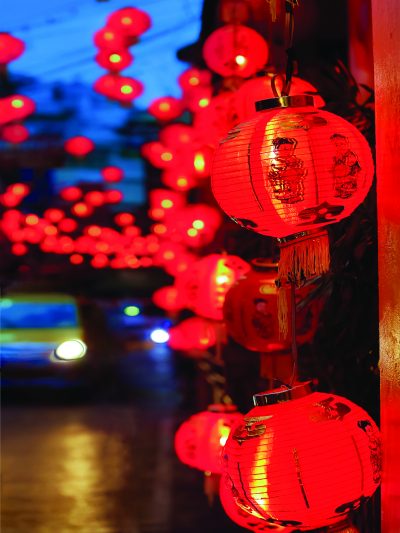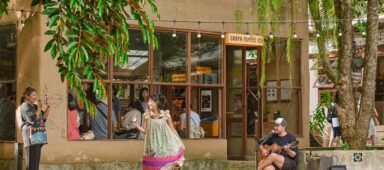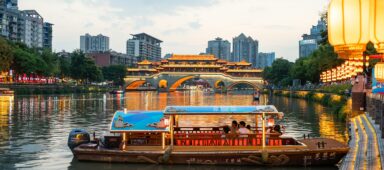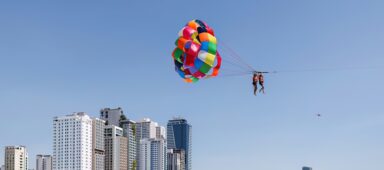Parades, prayers and festive displays of lanterns and fireworks; here’s a look at how Lunar New Year is celebrated in various parts of the world.
Words Charles Young Photography 123rf
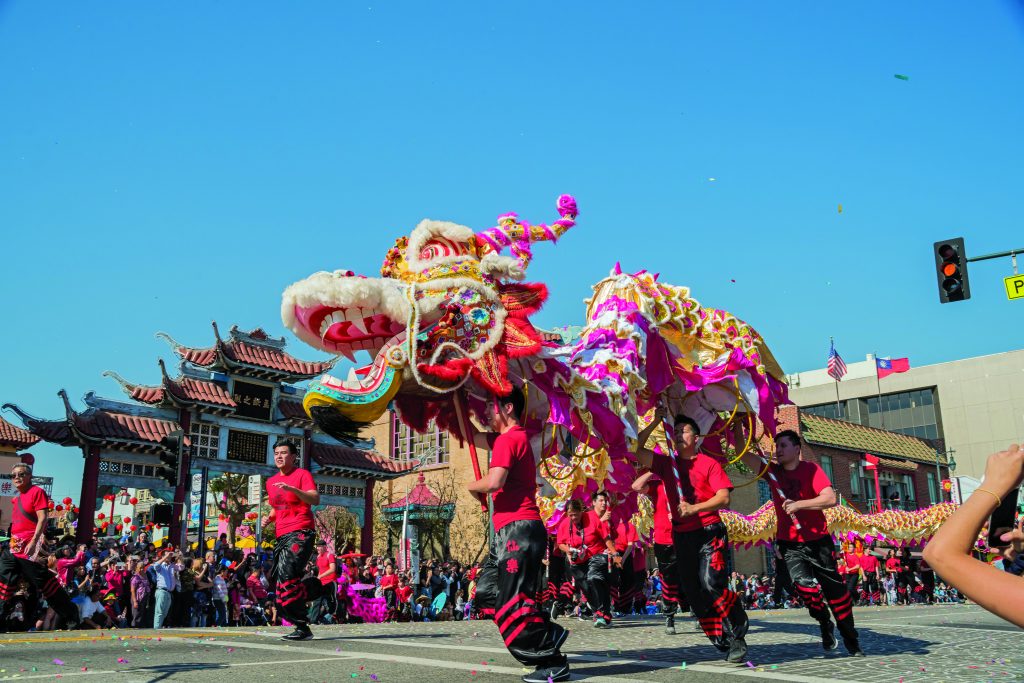 On 5 February, almost a quarter of the world’s population will celebrate the Lunar New Year, resulting in the largest annual migration of humans on the planet. While most nations celebrate the New Year according to the solar-based Gregorian calendar on 1 January, China, Korea, Vietnam and several other Asian countries will celebrate the Lunar New Year based upon the ancient Chinese one.
On 5 February, almost a quarter of the world’s population will celebrate the Lunar New Year, resulting in the largest annual migration of humans on the planet. While most nations celebrate the New Year according to the solar-based Gregorian calendar on 1 January, China, Korea, Vietnam and several other Asian countries will celebrate the Lunar New Year based upon the ancient Chinese one.
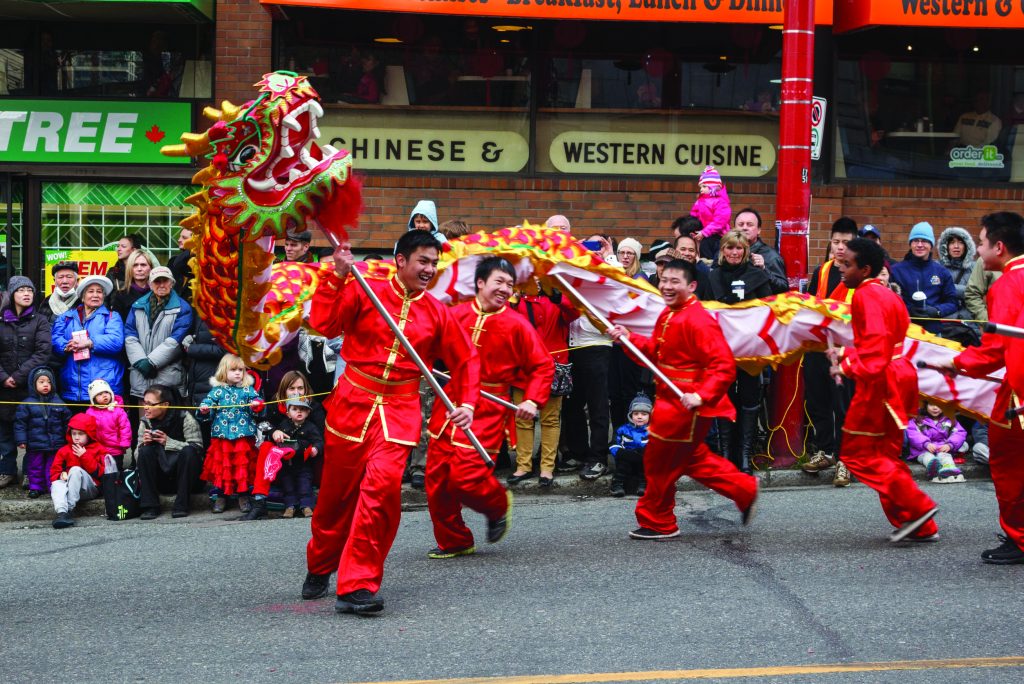
The most vivid images we have of this festival are the noisy parades featuring dragon dancers snaking down lantern-bedecked streets to the cacophony of popping fireworks and ringing gongs that are sounded to frighten away evil spirits. Most major cities across the world now have one, with the biggest outside Asia being in London, San Francisco, Sydney and Vancouver, though you’ll find also find it celebrated in places as diverse as Kolkata, Santo Domingo, San Francisco and more or less everywhere you find ethnic Chinese or Vietnamese.
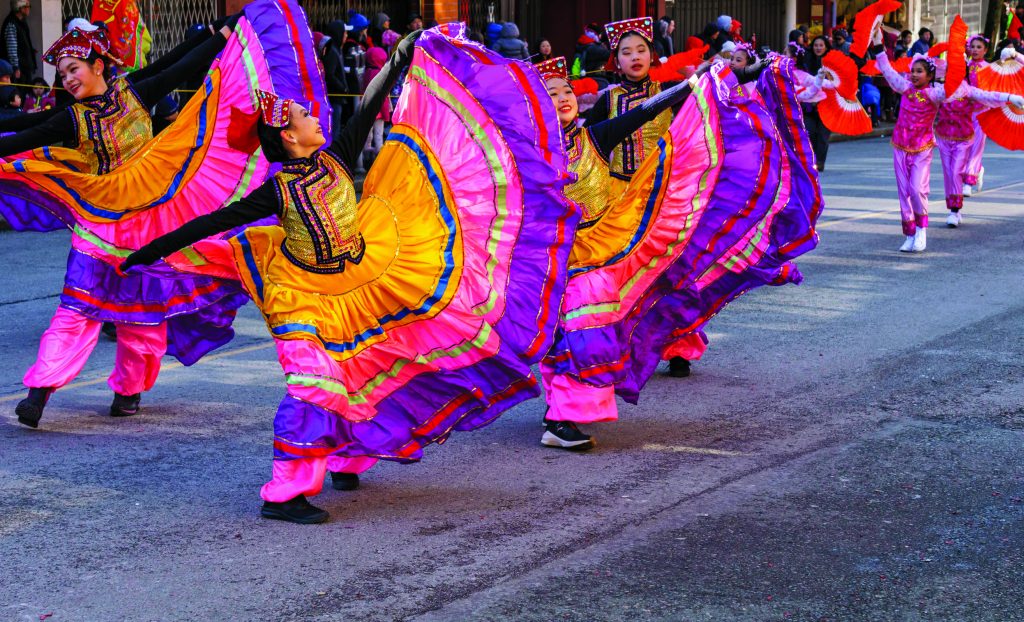
Like Christmas or Eid, this is traditionally the holiday when families get together and exchange gifts. This mass migration is most obvious in China itself, where during the Spring Festival, over 200 million people travel across the country, meaning it’s vitally important to book transport well ahead of the festivities.
Seeing Red
Red is a very popular colour during this time. Alongside the wearing of red clothes, and the hanging of red lanterns in the street and red paper duilian (paper strips marked with auspicious poetry) outside the door, the most popular aspect of the Lunar New Year is the exchange of red envelopes filled with “lucky money” – the commonest form of gift-giving for the Chinese.

Food
Food is another important aspect, with the north of China favouring the consumption of dumplings, while in the south, glutinous New Year cakes are more popular, though other regional specialities vary from place to place. Special desserts are also prepared, often with names similar to auspicious words such as tangyuan (soup balls), which sounds like tuanyuan (meaning ‘reunion’), or fa gao, a type of cake whose first syllable is the same as in fa cai, meaning ‘get rich quick’.
The main meal, however, is on New Year’s Eve, when family tables are laden with the most sumptuous food, often featuring some kind of hotpot, whose communal nature symbolises the coming together of the family. Of course, the ancestors eat first, and food and drink are symbolically offered to them before everyone else tucks in.
In: South Korea
Known as Seollal in South Korea, it’s a time of mass migration to family reunions, and over half the population will be on the move over the three-day public holiday. The focus of the Korean celebration is tradition, with respect given to both elders and ancestors, and it’s one of the occasions when many Koreans wear the traditional hanbok dress. Food offerings and deep bows are made to ancestors, while children give similar bows and respect to elders who reciprocate with gifts of money in traditional silk bags, along with words of wisdom for the future generation.

They also indulge in time-honoured pastimes that include the playing of special board games such as the ludo-like yutnori and the flying of kites, though young Koreans are more likely to be playing online games. The New Year also symbolises getting a year older, which is why a Korean’s age is usually one year more than their ‘international age’. as they gain a year after finishing the tteokguk soup that is drunk at this time.
In: Malaysia
Lunar New Year is celebrated similarly to China, though the Buddhist, Taoist and Confucian temples are more of a focus. People are likely to visit the colourfully decorated and brightly lit temples as part of their celebrations, with those on Petaling Street in Kuala Lumpur and in George Town in Penang especially popular.
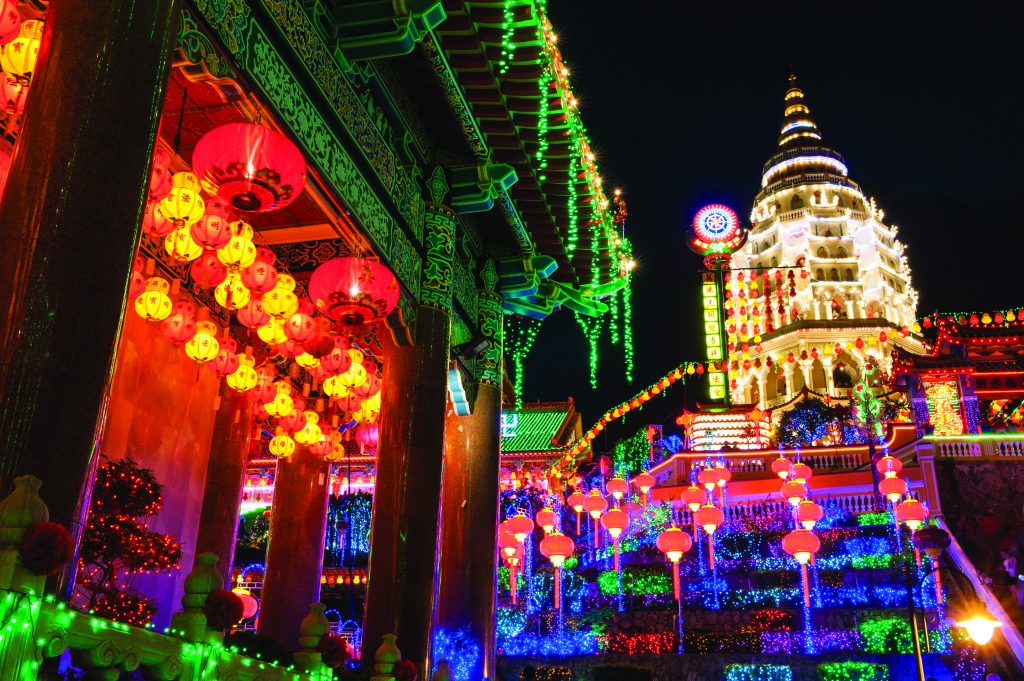
Another unique feature of the Malaysian Lunar New Year, popularly referred to as Chinese New Year (often abbreviated to CNY), is that due to the multicultural society, many Chinese invite not only their own families to their homes but have ‘open houses’, where neighbours and even strangers are welcome, whatever their religious or cultural background. They also eat a unique dish called yee sang, a mixture of many different vegetables, which guests toss in the air with their chopsticks; the higher it’s tossed means the more good luck, health and prosperity they will enjoy in the coming year.
In: Vietnam
Although Vietnam’s Tet Nguyen Dan, or the ‘Feast of the First Morning of the First Day’, shares many of the aspects of Lunar New Year, such as ancestor worship, family reunions, red envelopes, noisy parades and visiting temples, it also has a few idiosyncrasies, such as the New Year tree, a long bamboo pole adorned with various objects such as good luck charms, paper animals or tree branches.
Given the global nature of this festival, you’ll always be near the celebration, and it’s well worth experiencing a Lunar New Year parade at least once in your life, whether you’re in Asia, Europe or the Americas.
Did you know?
Auspicious during Lunar New Year:
- The colour red
- The numbers 6 and 8
- New clothes
- Money packets or red packets in some countries
- Fireworks
Unlucky during New Year:
- Hair cutting
- Cleaning the house
- Arguing or swearing
- Saying unlucky words such as “death” or “sickness”
- Breaking things
